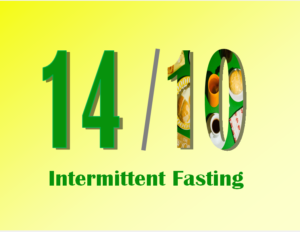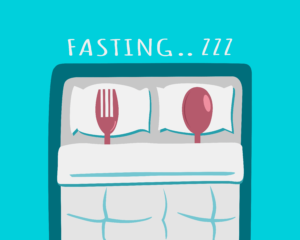14/10 intermittent fasting could be the strategy you need to boost your energy, control your blood sugar, and lose weight!
What is 14/10 intermittent fasting?
Intermittent fasting has gained immense popularity in recent years, and for good reason. Not only can it help you shed unwanted pounds, but it also offers numerous health benefits such as improved insulin sensitivity and increased energy levels.
However, creating an effective and sustainable intermittent fasting schedule can be a daunting task without proper guidance. There are lots of different ways to intermittent fast and we will discuss many of them below. But first, let’s take a look at 14/10 intermittent fasting. Because if you are looking for a way to start fasting, 14/ 10 intermittent fasting is a great way to begin. 14/10 intermittent fasting is also a great plan for days when a longer fast just won’t work.
Experts agree that intermittent fasting is not for everyone. Please read our Terms of Use
14/10 intermittent fasting simply means that all of your eating takes place within 10 hours of the day. You can eat as usual during the ten hours, but 2-3 meals without snacking is ideal. Then for 14 hours, you drink water, unsweetened coffee/ tea, and of course get a good night’s sleep. Sounds easy enough, right? If you are currently intermittent fasting for longer periods of time, you are already reaping the benefits of 14 hour fasting.
Make sure you are losing fat (not muscle) from the right places.
Get the arboleaf Smart Scale and Smart Measuring tape today!
Is 14/10 intermittent fasting effective?
Intermittent fasting for 14 hours allows your body to fully digest the last food you ate. For many of us, we tend to graze all throughout the day and then sleep for 7-8 hours a night. Then, we wake up, load our coffee with cream and sugar and have some breakfast. As a result, our bodies never have a chance to get back to ground zero. Which means the body is constantly sluggish and in digestion mode. And digestion mode is a major operation for the body! It is very helpful when our digestive systems get a rest and our bodies get a chance to do other maintenance and repair (i.e. anti-aging activities.) And 14 hour fasting allows that to happen!
{Related Post: Signs Intermittent Fasting Is Working }
How does fasting lower our blood sugar levels?
I am certainly not a doctor or a scientist. That’s why I always link to reputable sources whenever I start talking about cellular stuff. 🙂 But please always be sure to do your own research or talk to your doctor about any questions you may have.
Lots of sugar in the blood stream is very dangerous to the body. In fact, it can end up requiring emergency care and result in a diabetic coma. Fortunately, for most of us, our bodies have a built in system to combat high blood sugar. But we shouldn’t take it for granted, because over use can really mess it up.
When sugars enter our bloodstream, the pancreas (unless you have Type 1 diabetes) releases insulin. Insulin is kind of like a door bell signaling the cells there is sugar on the way to use for energy which prompts the hungry cell to open up. Once the cells have all they need, they close back up and leave the rest of that sugar to accumulate in our blood. When that happens, the body starts shipping the sugars to our fat reserves. (CDC) These unpopular “shipments” protect our bodies from a sugar coma.
All the while, the pancreas continues to pump out insulin to try and deal with the sugar we are consuming. When we eat all the time, the cells start becoming less responsive to insulin’s constant doorbell. (Kind of like the neighborhood train you’ve learned not to hear.) So NOW you have a bunch of sugar and insulin floating around in your blood. And then you eat again.
Eventually this repeated behavior can set the stage for prediabetes and type 2 diabetes. Signs of this include weight changes, blurry vision, sugar cravings, increased thirst and headaches. If you’re experiencing these symptoms, please contact your doctor.
If you are curious about your blood sugar levels, another way to investigate is with an Everlywell HbA1c Test. This is a simple blood test that measures your average blood sugar levels over the past three months. You can do this in the comfort of your own home and mail in your results. But of course, please don’t let a test like this be a substitute for a doctor’s visit. I know many of us do not like going to the doctor, but this is one thing we do not want to mess around with.
{Related Post: When Does Ketosis Start When Fasting? }
Women Who Fast is a participant in the Amazon Services LLC Associate Program, which means we receive a commission if you purchase through our link, at no extra cost to you.
14 hour fast benefits
14 hour fasting gives the body 14 hours to burn through all that sugar in your blood stream and return to normal. If your cells get hungry in the process and there is no sugar to burn, they start burning fat instead! And that’s a great thing for most of us, right? Plus, most people find that their minds are clearer and they have more energy when their bodies aren’t digesting. Next time you eat a lot of food and feel sluggish, make a note of how that feels. Then do the same thing after going without food for 14 hours. I think you’ll notice a difference!
Other intermittent fasting schedules
As we discussed above, 14/10 intermittent fasting is a great way to attain important health benefits from fasting. However, to boost weight loss and spend more time in autophagy, you may want to fast for longer periods of time. Here is a list of other popular fasting schedules. Remember, the first number denotes how long you will fast and the second number represents the number of hours you have for your meals:
- 16/8 method: This is one of the most common and beginner-friendly fasting schedules. It involves fasting for 16 hours and restricting your eating window to 8 hours. For example, you might choose to eat between 12 pm and 8 pm, and fast for the remaining 16 hours.
- 5:2 diet: With the 5:2 diet, you eat normally for 5 days of the week and restrict your calorie intake to one meal of 500-600 calories on the other 2 days. These fasting days can be consecutive or non-consecutive, depending on your preference.
- Alternate-day fasting: As the name suggests, alternate-day fasting involves fasting every other day. On fasting days, you can consume a limited number of calories, typically around 500-600 calories.
- Eat-stop-eat: This fasting protocol involves fasting for 24 hours once or twice a week. For example, you might choose to fast from dinner one day until dinner the next day. (I really like this one! I always feel great after going 24 hours without food.)
- OMAD (One Meal a Day): With OMAD, you eat only one meal within a 1-hour eating window and fast for the remaining 23 hours of the day. This type of fasting is more advanced and may not be suitable for everyone.
Take time to experiment
These are just a few examples of the different intermittent fasting schedules you can follow. It’s important to choose a schedule that aligns with your goals, lifestyle, and personal preferences. Now that you have an idea of the different fasting protocols available, take some time to figure out the right intermittent fasting schedule for you. Happy Fasting!





















